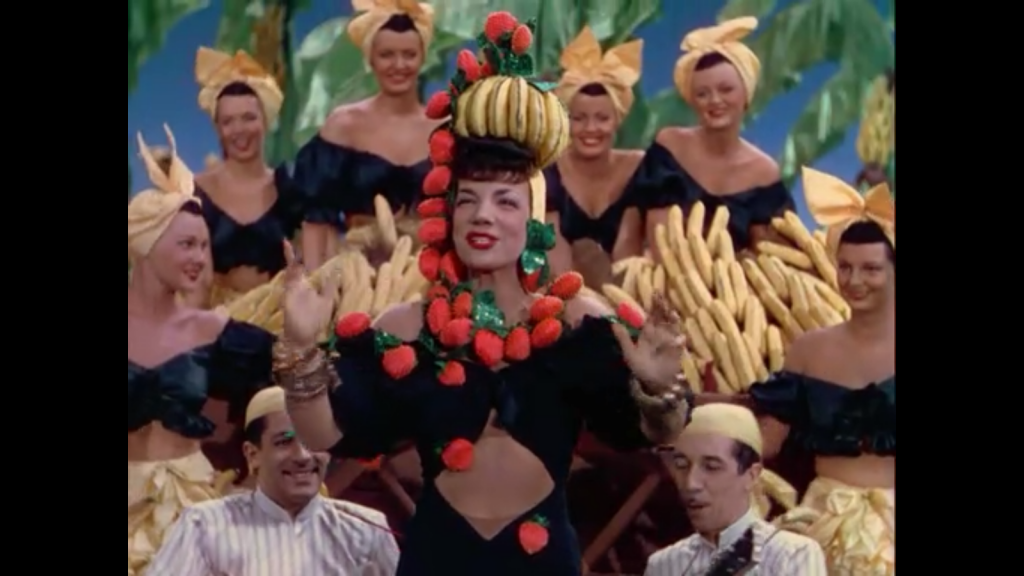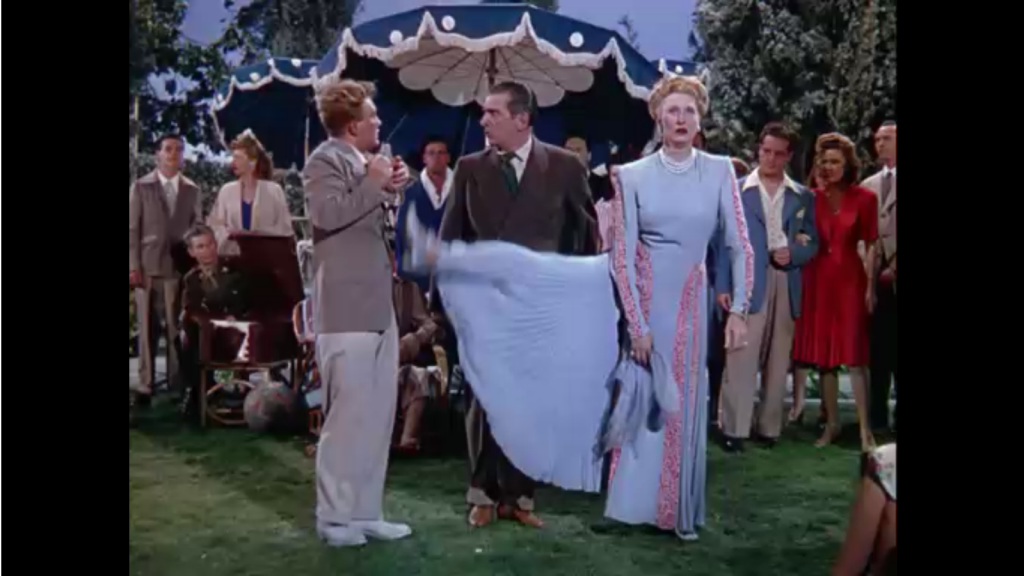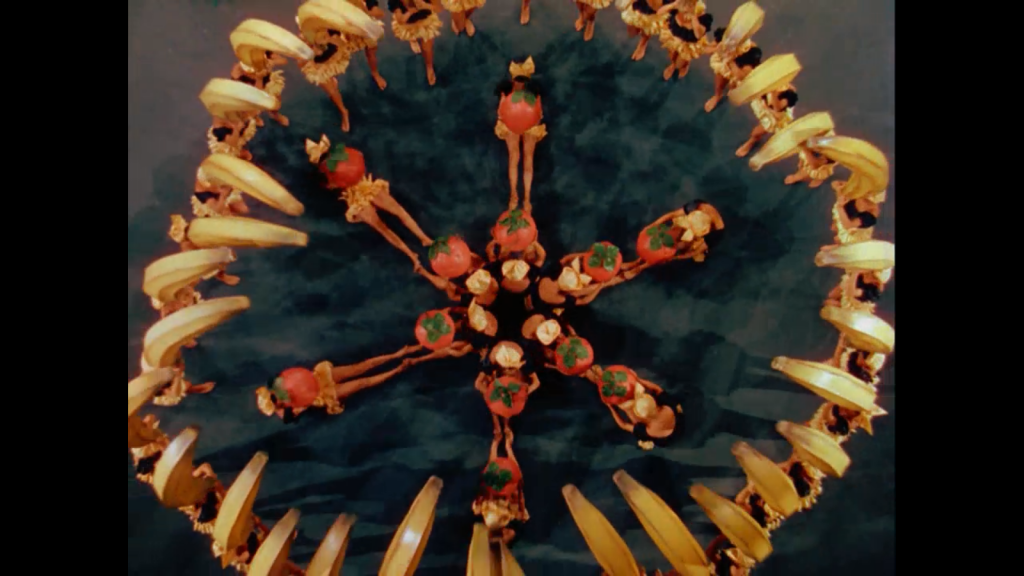|
Genres, Themes, Actors, and Directors:
- Alice Faye Films
- Busby Berkeley Films
- Carmen Miranda Films
- Let’s Put On a Show!
- Mistaken Identities
- Musicals
- Soldiers
- World War Two
Response to Peary’s Review:
Peary accurately notes that this “camp classic” (the first film “directed and choreographed by Busby Berkeley”) possesses “a nominal plot” — indeed, it’s simply a paper-thin variation on the “boy meets-loses-wins girl” trope, with a ridiculous mistaken-identity “subplot” thrown in for good measure, and a humorously hasty happy ending slapped on to bring things to a convenient close. But, as he points out, the “conventional story [truly] takes a back seat to the songs and dances”, which are “some of the worst yet most inspired, colorful, and extravagant musical numbers in cinema history” (quite a mixed compliment, there!).

He posits simply that they “boggle the mind”, and likens the entire film to one of “those so-awful-they’re-fascinating half-time shows during the Orange Bowl”. With that said, film fanatics of any stripe (i.e., gay or straight) won’t want to miss watching — at least once — the film in which the infamously English-mangling Carmen Miranda (“I spilled the cat out of the beans!”) sings “The Lady With the Tutti-Frutti Hat” while “chorus girls do suggestive things with giant bananas”.
Note: Watch for limber-limbed Charlotte Greenwood strutting her stuff in a brief scene, and a (perhaps unknown; her identity is debatable) acrobatic dancer in a black leotard doing a nifty solo in a medley towards the end.
Redeeming Qualities and Moments:
- Carmen Miranda singing “The Lady in the Tutti-Frutti Hat”

- Charlotte Greenwood’s surprisingly limber dance maneuvers

- Busby Berkeley’s marvelously surreal dance “creations”

Must See?
Yes — to see Carmen Miranda in her most iconic film, and as a camp classic.
Categories
- Cult Movie
- Noteworthy Performance(s)
Links:
|
One thought on “Gang’s All Here, The (1943)”
A once-must, as a colorful extravaganza with some memorably over-ripe sequences, and – yes – for Miranda’s performance.
Although this is often cited as a “camp classic”, I can’t agree. The whole thing is too conscious and, again, my feeling is that pure camp is accidental. I mean, you can’t have hundreds of chorus girls waving penises – I mean, bananas – around and *not* know what you’re doing!
To continue…’The Lady in the Tutti-Frutti Hat’ is really the main reason for checking this film out. It comes about 23 minutes in, is about 7 minutes long, and is worth every second. It’s quite enjoyably batty (esp. the finish). I also can’t agree with Peary that it is among the “worst yet most inspired” musical numbers in cinema. How could he use the word “worst” when the sequence is truly mind-boggling in its audacity?! There is simply not another sequence like it in film and, each time I see it, I do have to pick my jaw up off the floor. But that’s hardly because it’s bad.
As a ‘choreographer’, director Berkeley has always, to me, come off as more of a mathematician – using tons of people to realize his kaleidoscopic whimsy. His dancers don’t really dance – and Berkeley himself was not a trained dancer. What makes Berkeley’s imagery work is his precision (I can imagine the *hours* of rehearsal to get things right) – and the results are often impressive, even if they simultaneously come off as the work of a control freak. The actual dancing in ‘TGAH’ is minimal.
Like ‘Easter Parade’, ‘TGAH’ has (as noted) a negligible plot – this time, hinged on wartime romance. The cast really can’t do much with that end of things, though there are a few bright sequences in which the dialogue sparkles and everyone rises to those occasions. Greenwood and Horton come off rather well in that regard, but Miranda shines – as brightly as her various, very bright costumes – whenever she’s on-screen. You really don’t want to miss her.